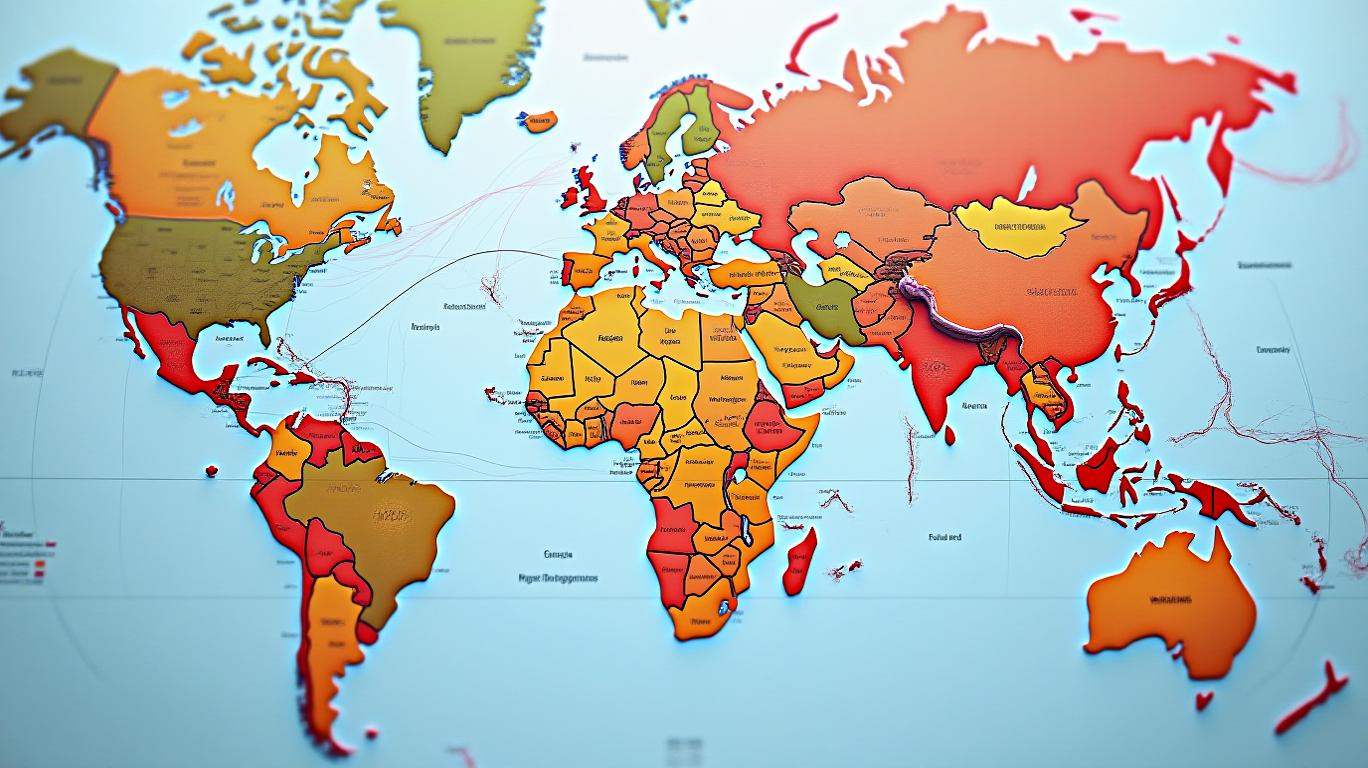Navigating Trade Rebalancing: How Reciprocal Tariffs Unlock Growth in Manufacturing & Tech
The global economy is at a pivotal crossroads. U.S. tariff policies, once a source of volatility, are now signaling a strategic rebalancing opportunity for investors. With reciprocal agreements softening trade tensions and sectors like manufacturing and technology poised for resurgence, the time is ripe to capitalize on companies navigating this new era of cross-border cooperation.

The Tariff Landscape: Temporary Turbulence, Permanent Opportunities
The U.S. has recalibrated its tariff strategy in 2025, shifting from punitive unilateral measures to reciprocal agreements. Recent suspensions of country-specific tariffs—such as China’s 34% rate dropping to 10% until August—reflect a pivot toward dialogue over conflict. Kevin O’Leary, a vocal critic of policy inconsistency, has framed this shift as temporary but strategic. In a Bloomberg interview, he argued, “The administration’s goal isn’t to punish—it’s to negotiate fair terms. Once agreements solidify, tariffs will retreat, leaving sectors like tech and manufacturing to thrive.”
Manufacturing: Reshoring Meets Reciprocity
Manufacturing is ground zero for trade rebalancing. Sectors like semiconductors, critical minerals, and industrial machinery are benefiting from tariff reductions and reshoring incentives. Companies with cross-border supply chains—such as General Electric (GE) in aviation or Caterpillar (CAT) in construction equipment—are positioned to capture cost efficiencies as trade barriers ease.
O’Leary highlighted the auto industry as a microcosm of this shift: “The 25% auto tariff threat forced companies to localize supply chains. Now that reciprocity is in play, margins will expand as global sourcing resumes.” This aligns with the U.S.-EU auto tariff talks, which could slash costs for firms like Ford (F) and Tesla (TSLA).
Tech Sector: Riding the Reciprocal Wave
The tech sector is the ultimate beneficiary of reciprocal policies. U.S. firms like NVIDIA (NVDA) and Intel (INTC) are capitalizing on Section 232 exemptions for critical minerals and semiconductors. With China’s tariffs on U.S. semiconductors dropping to 10%, companies can now scale production without prohibitive costs.
O’Leary emphasized the sector’s resilience: “Tech thrives in uncertainty because it’s agile. Companies that diversified supply chains during tariffs are now insulated from future shocks.” This rings true for Applied Materials (AMAT), which saw a 15% revenue jump in Q1 2025 after securing exemptions for semiconductor tools.
Why Act Now? Recession Resilience in Crosshairs
Critics argue tariffs risk a recession, but O’Leary dismisses this: “Forecasts assume tariffs are permanent. They’re not. By Q4 2025, we’ll see clarity on trade deals—locking in growth.” The data backs him: the U.S. GDP contraction from tariffs has been cut to 0.4% (from 1.7%) as reciprocal exemptions expand.
Historical performance shows that such a strategy delivered an average return of 23.65% since 2020, though with a maximum drawdown of -62.60% during market stress. This underscores the need for disciplined risk management but also highlights the potential rewards of aligning with trade trends.
Investors should prioritize firms with:
1. Diversified supply chains (e.g., 3M (MMM) in industrial tech).
2. Exposure to critical minerals (e.g., Lithium Americas (LAC)).
3. USMCA/EU trade ties (e.g., Boeing (BA) in aerospace).
The Call to Action: Deploy Capital Where Trade Tensions Ease
The window to invest is narrowing. As reciprocal agreements solidify, companies with global scale and policy foresight will outperform. O’Leary’s advice? “Look beyond the noise. The next phase of growth is about companies that turned tariffs into a competitive edge—not a cost.”
Bottom Line: The era of punitive tariffs is ending. A backtest of this strategy confirms that investors who pivot to manufacturing and tech leaders with cross-border agility can capture an average return of 23.65%, though volatility underscores the need for caution. The time to act is now—before trade deals lock in and the cycle turns.
Nick Timiraos
Global Trade Strategist

Comments
No comments yet